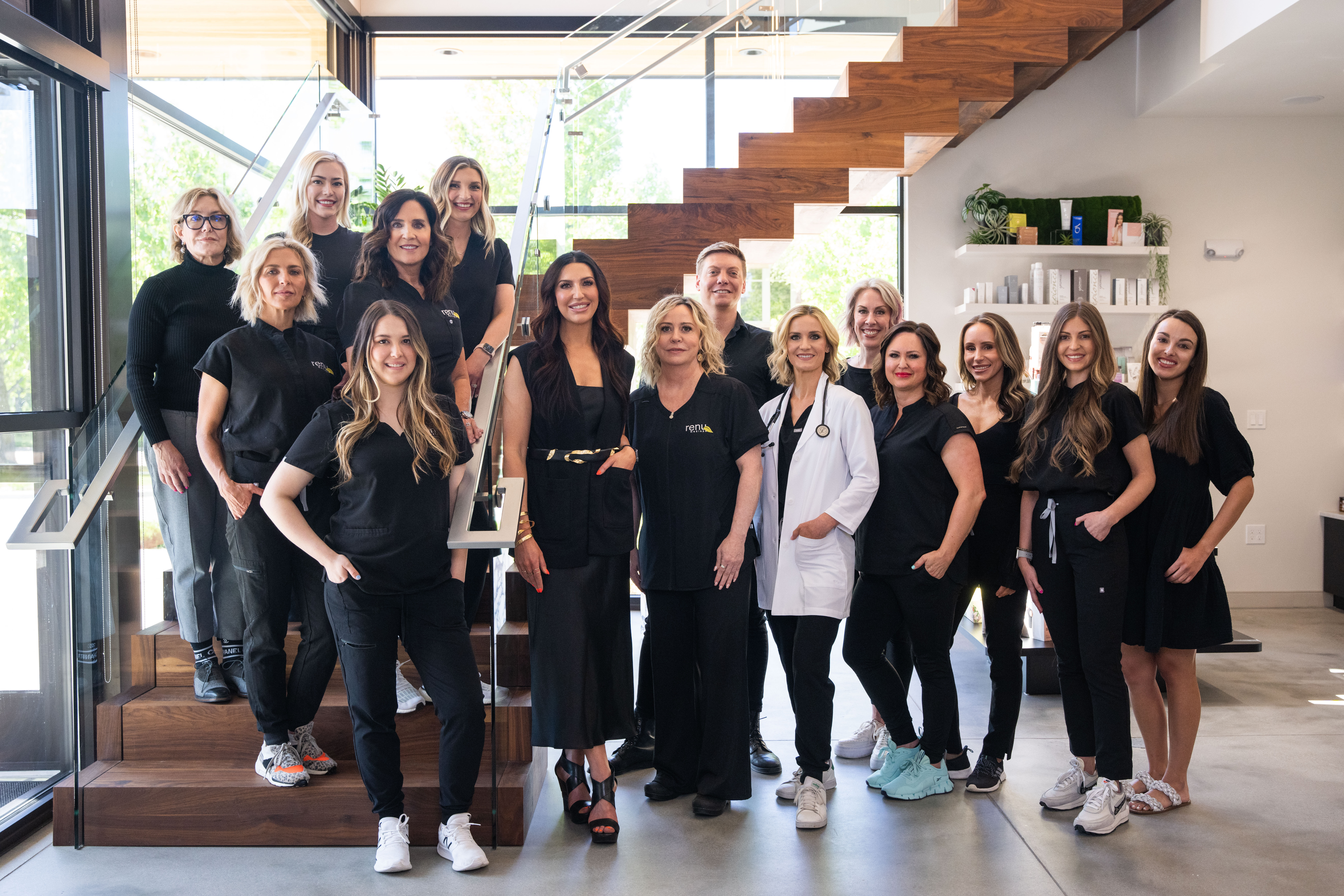Navigating the world of skincare can be overwhelming, especially when trying to differentiate between your skin type and your current skin condition. While your skin type is genetically determined and remains relatively constant, your skin condition can fluctuate due to various internal and external factors. Understanding both is essential for crafting an effective skincare routine that addresses your unique needs. In this comprehensive guide, we’ll explore how to determine your skin type and recognize your current skin condition.
Understanding Skin Type vs. Skin Condition
Skin Type
Your skin type is the natural state of your skin and is largely determined by genetics. It remains fairly consistent throughout your life, although it can be influenced by hormonal changes and aging. The primary skin types are:
- Oily Skin: Characterized by an overproduction of sebum, leading to a shiny appearance, enlarged pores, and a tendency to develop acne and blackheads.
- Dry Skin: Lacks sufficient natural oils, resulting in a rough texture, tightness, and a tendency to flake. It often looks dull and may feel uncomfortable.
- Combination Skin: Features both oily and dry areas, typically with an oily T-zone (forehead, nose, and chin) and dry or normal cheeks.
- Normal Skin: Balanced skin with even sebum production, minimal blemishes, and a smooth, even texture.
- Sensitive Skin: Prone to redness, irritation, and reactions to certain products or environmental factors. It can also be a characteristic of other skin types.
Skin Condition
Unlike skin type, your skin condition can change frequently and is influenced by various internal and external factors. Some common skin conditions include:
- Dehydration: Lack of water in the skin, leading to dullness, tightness, and fine lines.
- Acne: Can occur with any skin type due to hormonal changes, diet, stress, or improper skincare.
- Rosacea: A chronic condition characterized by redness and visible blood vessels, often with small, red, pus-filled bumps.
- Hyperpigmentation: Dark spots or patches caused by sun damage, inflammation, or hormonal changes.
- Aging: Fine lines, wrinkles, and loss of elasticity due to natural aging processes and environmental damage.
How to Determine Your Skin Type
1. The Bare-Faced Method
This simple test can help you identify your skin type without any products.
Steps:
- Cleanse Your Face: Wash your face with a gentle cleanser and pat dry.
- Wait: Leave your skin bare for about an hour. Do not apply any skincare products.
- Observe: After an hour, examine your skin for any signs of oiliness, dryness, or irritation.
Results:
- Oily Skin: Your skin appears shiny, especially in the T-zone, and feels greasy to the touch.
- Dry Skin: Your skin feels tight, looks dull, and may have flaky patches.
- Combination Skin: Your T-zone is oily, but your cheeks feel dry or normal.
- Normal Skin: Your skin feels comfortable and balanced, with no significant oiliness or dryness.
- Sensitive Skin: Your skin shows signs of redness, itchiness, or irritation.
2. The Blotting Sheet Method
This method uses blotting sheets to measure oil production on different areas of your face.
Steps:
- Cleanse and Wait: Wash your face with a gentle cleanser and wait for an hour without applying any products.
- Blotting Sheets: Press a blotting sheet on different parts of your face: forehead, nose, chin, and cheeks.
- Examine: Hold the blotting sheets up to the light to see the amount of oil absorbed.
Results:
- Oily Skin: Sheets are saturated with oil from all areas.
- Dry Skin: Little to no oil is visible on the sheets.
- Combination Skin: Sheets show significant oil from the T-zone but little from the cheeks.
- Normal Skin: Sheets show a small amount of oil, indicating balanced skin.
- Sensitive Skin: Oil production may vary, but blotting may cause redness or irritation.
3. The Visual and Tactile Examination
Carefully examining your skin’s appearance and feel can provide insights into your skin type.
Steps:
- Cleanse and Wait: As with the other methods, start with a clean face and wait an hour.
- Visual Examination: Use a magnifying mirror to look closely at your pores and overall skin condition.
- Tactile Examination: Gently run your fingers over your face to feel for texture and oiliness.
Results:
- Oily Skin: Large, visible pores, shiny appearance, and a greasy feel.
- Dry Skin: Small, almost invisible pores, rough texture, and a tight, flaky feel.
- Combination Skin: Varying pore sizes, oily T-zone, and dry or normal cheeks.
- Normal Skin: Even texture, small pores, and balanced moisture levels.
- Sensitive Skin: Redness, visible irritation, and a potential burning or itching sensation.
Recognizing Your Current Skin Condition
Determining your current skin condition involves observing changes and understanding the factors that may be influencing your skin. Here are some common skin conditions and how to recognize them:
1. Dehydration
- Signs: Dullness, tightness, and fine lines that appear more pronounced.
- Factors: Lack of water intake, excessive caffeine or alcohol consumption, dry weather, and improper skincare.
2. Acne
- Signs: Presence of pimples, blackheads, whiteheads, or cystic lesions.
- Factors: Hormonal changes, stress, diet, and clogged pores due to makeup or skincare products.
3. Rosacea
- Signs: Persistent redness, visible blood vessels, and sometimes small, red, pus-filled bumps.
- Factors: Genetic predisposition, environmental triggers (e.g., sun exposure, hot weather), spicy foods, and stress.
4. Hyperpigmentation
- Signs: Dark spots or patches, often resulting from sun exposure, inflammation, or hormonal changes.
- Factors: UV damage, acne scars, melasma (related to hormonal changes), and post-inflammatory hyperpigmentation.
5. Aging
- Signs: Fine lines, wrinkles, loss of elasticity, and sagging skin.
- Factors: Natural aging process, sun exposure, lifestyle factors (e.g., smoking, poor diet), and genetic predisposition.
Tailoring Your Skincare Routine
Understanding your skin type and current skin condition allows you to tailor your skincare routine effectively. Here’s how you can adapt your regimen based on your findings:
For Oily Skin
- Cleanse: Use a gentle, foaming cleanser to remove excess oil.
- Exfoliate: Regularly exfoliate to unclog pores and reduce shine.
- Moisturize: Choose a lightweight, oil-free moisturizer.
- Treat: Use products with salicylic acid or benzoyl peroxide to manage acne.
For Dry Skin
- Cleanse: Opt for a hydrating, creamy cleanser.
- Moisturize: Use a rich, nourishing moisturizer to lock in moisture.
- Hydrate: Incorporate serums with hyaluronic acid to boost hydration.
- Protect: Apply a gentle, broad-spectrum sunscreen daily.
For Combination Skin
- Cleanse: Use a balanced cleanser that doesn’t strip the skin.
- Moisturize: Apply lightweight moisturizers in the T-zone and richer creams on dry areas.
- Treat: Use targeted treatments for specific concerns (e.g., mattifying products for oily areas).
For Normal Skin
- Cleanse: Maintain with a gentle cleanser.
- Moisturize: Use a balanced moisturizer to maintain hydration.
- Protect: Regularly apply sunscreen to protect against UV damage.
- Enhance: Incorporate serums or treatments as needed to address specific concerns.
For Sensitive Skin
- Cleanse: Use a mild, fragrance-free cleanser.
- Moisturize: Opt for soothing, hypoallergenic moisturizers.
- Calm: Use products with calming ingredients like aloe vera or chamomile.
- Protect: Choose a gentle, mineral-based sunscreen.
Get to Know Your Skin for Healthy, Glowing Skin
Distinguishing between your skin type and your current skin condition is crucial for developing a skincare routine that truly works for you. By understanding your skin’s inherent characteristics and recognizing how it changes over time, you can select the right products and treatments to address its unique needs. Whether you have oily, dry, combination, normal, or sensitive skin, and whether you’re dealing with dehydration, acne, rosacea, hyperpigmentation, or aging, tailored skincare can help you achieve a healthy, radiant complexion. If you’re in the Boise, ID area and looking for a licensed professional to help you discover your skin type and condition, here is a list of professionals in your area. So, take the time to analyze your skin, listen to its needs, and enjoy the journey to discovering your best skin yet!
Pro Tip: Try searching “skin consultation” in the search bar here!
















No comments yet. Add the first comment